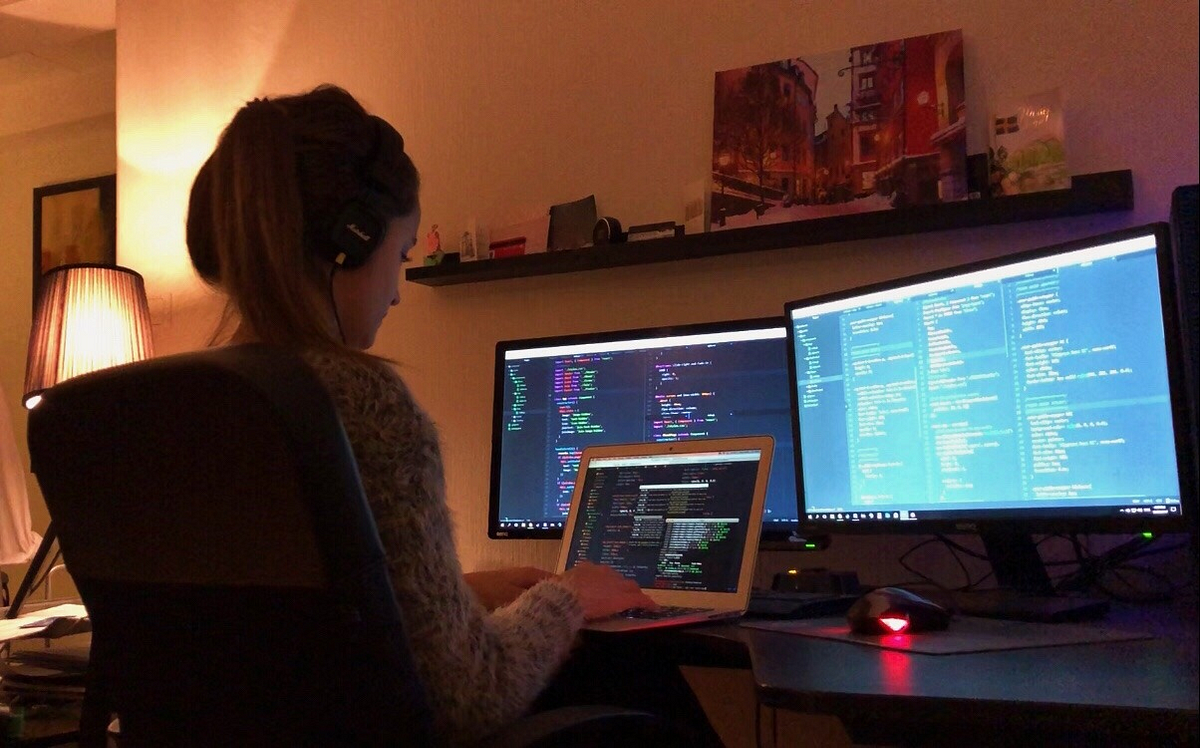Discover the Benefits of Nearshore Software Development for Your Team
Discover the Benefits of Nearshore Software Development for Your Team
Blog Article
Dedicated Developers vs. In-House Teams: Which Is Right for You?
The choice between using dedicated designers and preserving an in-house team is a significant one that can influence the trajectory of your tasks and overall service strategy. Conversely, in-house teams contribute to a cohesive company culture and a nuanced understanding of long-lasting objectives.
Recognizing Committed Developers
The growing need for specialized skills in the technology sector has actually led to the appearance of dedicated designers as a feasible remedy for several organizations. These specialists are typically gotten on a project basis, allowing firms to utilize particular competence without the lasting dedication related to permanent hires. Dedicated designers are commonly embedded within a client's team, providing versatility and scalability to satisfy task needs.
This design permits companies to access an international talent swimming pool, which is especially advantageous in a rapidly progressing technological landscape. Dedicated developers can be sourced from various geographical areas, ensuring that firms can locate the right ability at competitive prices. They typically bring a riches of experience and expertise, having actually serviced varied projects across various industries.
In addition, devoted developers can concentrate solely on the jobs at hand, enhancing productivity and performance. They are geared up to incorporate perfectly into existing process, working together carefully with internal teams to accomplish project objectives. This approach not just lowers the burden of employment and training yet likewise allows companies to stay active, adapting quickly to changing market needs and technical improvements.
Benefits of In-House Teams

Moreover, in-house teams tend to have a deeper understanding of the company's mission, values, and goals. This placement can enhance staff member interaction and inspiration, as team participants feel much more attached to their work and the organization's success. Additionally, having a committed in-house team permits for far better placement of methods and purposes, as these participants are constantly concentrated on the company's top priorities.
In-house teams also facilitate quicker decision-making processes, as they can react more swiftly to adjustments and obstacles. The recognized relationships and experience with business methods permit streamlined process and minimized miscommunication. Eventually, the mix of a cohesive society, placement with organizational objectives, and reliable communication makes internal groups a valuable asset for numerous companies, particularly those looking to cultivate long-term development and advancement.
Cost Factors To Consider
When reviewing cost factors to consider, both internal teams and devoted designers existing distinctive financial ramifications for organizations. Involving devoted developers normally involves a pay-per-project or per hour price model, which can be check these guys out affordable for organizations with rising and fall project needs. This method enables for versatility in scaling resources up or down, ensuring that companies only spend for the solutions they require.
In contrast, in-house groups entail fixed costs, including salaries, benefits, and overhead expenditures such as workplace and tools. While this version provides greater control and prompt availability of resources, it have a peek here might cause greater lasting costs, especially if the work does not warrant a permanent personnel.
In addition, firms should consider the covert prices linked with employment and training of internal workers, which can even more strain budget plans. In many cases, the time and sources spent on handling an internal team can interfere with the organization's core company objectives.

Task Administration and Flexibility
Project administration and versatility are critical aspects that influence the option between internal groups and devoted developers. Devoted teams often have actually established processes for handling tasks efficiently, leveraging specific methods like Agile or Scrum, which help with repetitive development and versatility.

Eventually, the selection in between dedicated developers and internal groups depends upon the wanted degree of versatility and the particular job management demands. Business should review their operational dynamics, job complexity, and source schedule to identify which option straightens finest with their tactical purposes.
Making the Right Choice
Selecting the appropriate development strategy-- committed designers or in-house teams-- needs a careful evaluation of various variables that align with a business's tactical objectives. On the other hand, in-house teams can supply better continuity and assimilation with existing employees.
Next, evaluate your spending plan. Devoted developers typically present a cost-efficient option for short-term tasks, while in-house teams may sustain higher long-lasting expenditures due to incomes, benefits, and expenses prices. Evaluate the level of control and cooperation wanted; internal teams commonly foster stronger interaction and placement with business society.
In addition, consider the time structure. If immediate results are necessary, devoted designers can be onboarded swiftly, whereas building an internal team takes time for employment and training. Finally, weigh the lasting vision of your organization. Investing in an internal group might generate far better returns over time if constant development is important. Inevitably, the choice rests on a detailed evaluation of these aspects, making certain placement with your business's overall purposes and operational demands.
Conclusion
Finally, the decision in between internal teams and dedicated programmers depends upon project requirements and organizational goals. Dedicated designers supply flexibility and specific knowledge, making them ideal for temporary initiatives. On the other hand, in-house groups grow a cohesive society and deeper placement with long-lasting objectives. Cautious assessment of spending plan constraints, job timelines, and wanted control levels is crucial for establishing the most suitable strategy, making certain positioning with calculated priorities and functional efficiency. wix ecommerce
The choice between making use of dedicated developers and keeping an internal team is a considerable one that can affect the trajectory of your jobs and overall organization method.Job monitoring and adaptability are essential aspects that influence the option between in-house groups and specialized designers. software development staff augmentation.In contrast, internal groups might excel in keeping a constant job management framework due to their familiarity with the organization's society and long-lasting objectives. Committed programmers typically provide an affordable solution for temporary projects, while internal teams might sustain greater long-lasting costs due to incomes, advantages, and expenses costs.In verdict, the decision between dedicated designers and internal groups pivots on project requirements and business objectives
Report this page